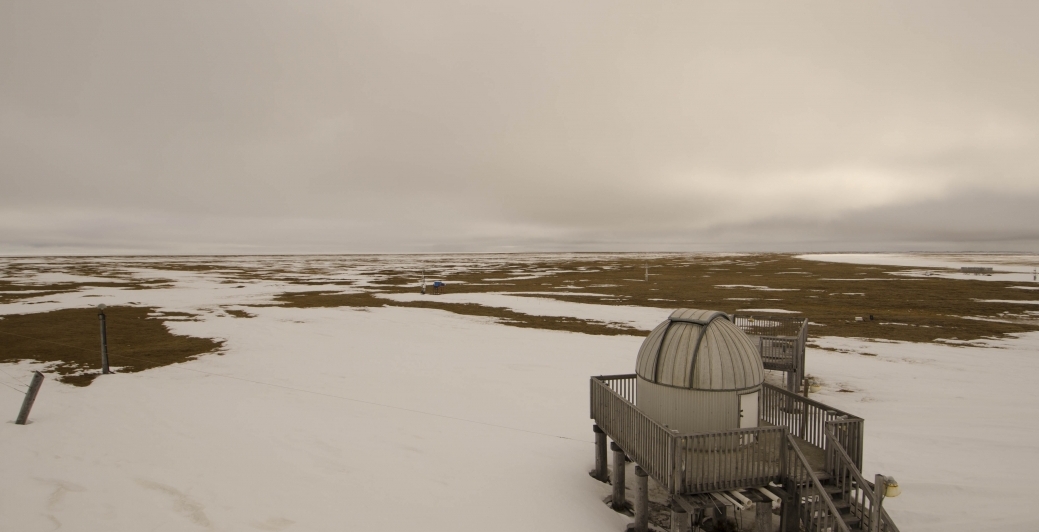
The record heat that is baking Alaska is poised to smash a host of climate records in 2016, including the earliest snowmelt date at NOAA’s Barrow Observatory, the northernmost point in the nation.
Staff at the observatory reported snowmelt occurred May 13, the earliest snowmelt date in 73 years of record-keeping, beating the previous mark set in 2002 by a full 10 days.
The early melting follows a record-setting winter that saw temperatures average more than 11 degrees above normal for the 49th State, shattering the previous record set in 2015. At 320 miles north of the Arctic Circle, Barrow is usually one of the last places in the United States to lose snow cover.
Snow is not the only thing that’s vanishing. Preliminary data from the National Snow and Ice Data Center indicate 2016 will set the record for minimum winter sea-ice extentoffsite link, eclipsing the 2015 mark. Satellite photos from mid-May depict an early sea-ice breakup with an ominous series of openings, known as leads, extending deep into the Arctic.
David Douglas, research biologist with the U.S. Geological Survey, said this spring’s conditions illustrate how fragile and dynamic pack ice has become. “It looks like late June or early July right now,” he said. “Polar bears are having to make their decisions about how to move and where to go on thinner ice pack that’s mostly first-year ice.” Walrus could also face a tough summer, he said.[xyz-ihs snippet=”adsense-body-ad”]
For 40 years, wildlife biologist George Divoky has studied another Arctic species, the black guillemot, marking the start of egg-laying season for the fish-eating seabird on nearby Cooper Island. Guillemots generally lay their first eggs 10 days after snow-out in Barrow. Divoky, director of the nonprofit Friends of Cooper Island research institute, predicts a record early start to the season this year.
Early ice-out is a double-edged sword for guillemots, he said. The birds do well during the early part of the season, but when the ice pulls off shore, it takes the birds’ forage fish with it, reducing chick survival.
Intense spring heat also perturbs a host of biological and chemical cycles, from tundra green-up and wildlife breeding seasons, to fluctuations of atmospheric gases like methane and carbon dioxide. For scientists, climate change presents an unending — if disconcerting — series of research opportunities.
“It’s like a train wreck you can’t look away from,” Divoky said. “You never know what you’re going to see and this year’s as big a mystery as any.”
Source: NOAA [xyz-ihs snippet=”Adversal-468×60″]
